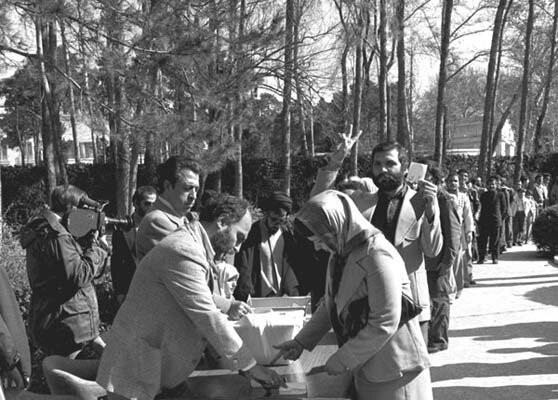.
February 1979: Imam Khomeini returns triumphantly from exile
On February 1, 1979, Ayatollah Ruhollah Khomeini, the late founder of the Islamic Republic returned to Iran after 15 years in exile.
https://twitter.com/IRANinETHIOPIA/status/1620692402880274432
Ayatollah Khomeini, officially known as Imam Khomeini inside Iran, was the first religious leader to openly condemn the program of the Shah (Mohammad Reza Pahlavi).
He was imprisoned in 1963 and expelled from Iran in 1964 as he was an outspoken critic of Shah’s program. In January 1963, Iran’s Shah issued a set of reforms called the “White Revolution”.

The six-point plan was claimed to be prepared for Iran’s development; however, the anti-religious and Western nature of the plan was clear for religious figures, including Imam Khomeini.
The religious and public opposition to the Pahlavi regime continued in different ways, from declarations to the cancelation of Nowruz (Iranian New Year) celebrations Yet, the turning point was the speech delivered by Imam Khomeini on June 3, 1963, at the Feyziyeh Seminary School. In his speech, Imam Khomeini strongly criticized Shah’s government for its anti-Islam policies.
Two days later at three o’clock in the morning, security men of the Pahlavi regime descended on Imam Khomeini’s home in Qom and arrested him. Imam Khomeini spent over 14 years in exile, mostly in the holy city of Najaf in Iraq. Initially, he was sent to Turkey on 4 November 1964, where he stayed in the city of Bursa for less than a year.
He was hosted by a Turkish Colonel named Ali Cetiner in his own residence. Later in October 1965, he was allowed to move to Najaf, Iraq, where he stayed until being forced to leave in 1978 after then-Vice President Saddam Hussein forced him out. Then he went to Neauphle le Château in France.
In 1978, massive anti-shah demonstrations broke out in Iran’s major cities. High unemployment and rising inflation after the 1977 economic collapse, exacerbated tensions. Between March and May 1978, the unrest spread to more than three dozen Iranian cities.
On September 8, 1978, a day known as “Black Friday”, the regime of Shah imposed martial law and security forces opened fire on demonstrators in Tehran’s Jaleh Square, killing more than 100.
By December 1978, protests had spread to nearly all of Iran’s major cities and dozens of smaller towns. The Shah and his family fled the country on January 16, 1979 two weeks before Imam Khomeini’s return.
It was originally planned that Imam Khomeini would enter Iran on 26 January, but then-prime minister Shapour Bakhtiar announced that the airports would be closed.
Imam Khomeini who was in Paris declared that he would return as soon as the airports were reopened. The closure of the airports led to widespread protests and strikes.
In Tehran alone, 28 people were killed. On 29 January, the airport was reopened. Finally, Imam Khomeini returned from exile triumphantly at 9:30 a.m. on 1 February 1979 and was welcomed by millions of people in the streets of Tehran.
After delivering a speech at the Mehrabad International Airport, he went to the Behesht-e Zahra cemetery, where many people who had been killed during the revolution were buried. Millions of supporters lined the path cheering his name, and hundreds of thousands gathered at the cemetery to listen to his speech.
Imam Khomeini’s arrival intensified months of popular protests against the Pahlavi regime. On February 8, 1979, a group of commanders, pilots, and staff of the Air Forces (Homafaran) went to Imam Khomeini’s home and expressed their loyalty to the revolution.

On February 11, 1979, the commanders of the armed forces attended Imam Khomeini’s home and submitted their resignation, declaring support to the founder of the Islamic Revolution. After the armed forces declared neutrality, the regime’s main institutions and all other remnants collapsed.
Shapour Bakhtiar, who served as the last prime minister, quickly fled Iran for France. These influential events marked the end of 2500 years of monarchy in the country. Imam Khomeini called on the people to restore peace and order.
Less than two months after the victory of the Islamic Revolution, Iranians took part in a referendum, where more than 98 percent of eligible voters voted ‘yes’ to the Islamic Republic as a new political system.
The Islamic Revolution established a new political system; a republic based on Islamic values and democracy. The day of Imam Khomeini’s return to Iran marks the beginning of the Ten-Day Dawn, which culminates with rallies on the anniversary of the victory of the Islamic Revolution on February 11.
44 years after the victory of the Islamic Revolution, yet the impressive notions and ideologies of Imam Khomeini are a role model for all freedom-seeking nations and independent Muslim countries in the world.